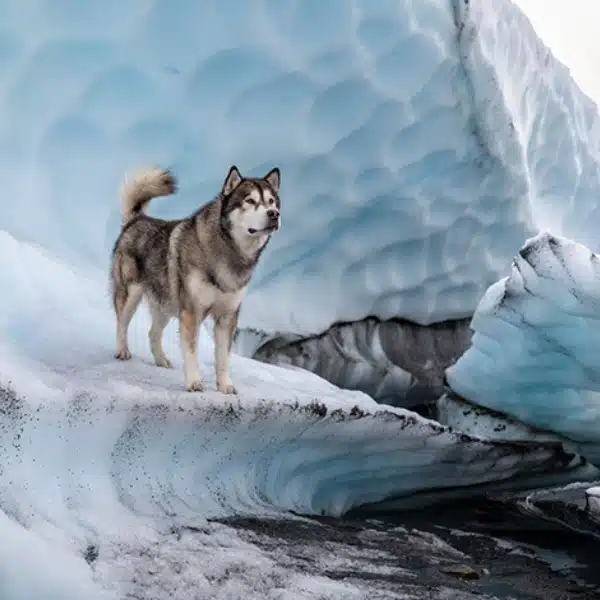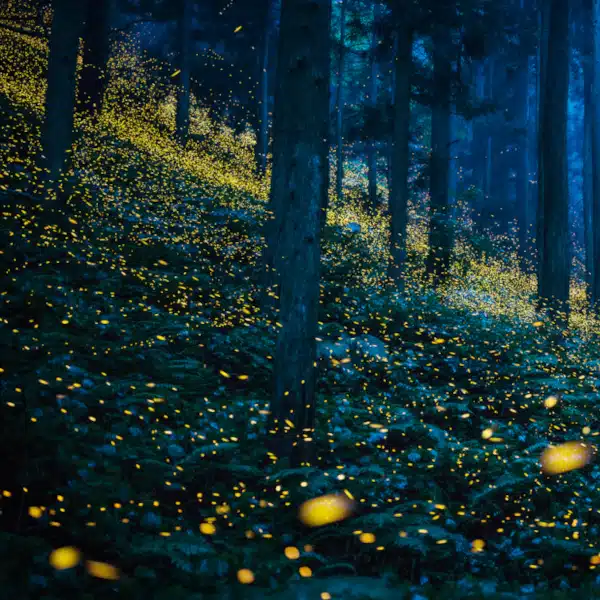
This post may contain affiliate links. If you make a purchase, My Modern Met may earn an affiliate commission. Please read our disclosure for more info.
From nightmares to waking dreams, photographer Samantha Goss uses her acute sleep paralysis as inspiration for a growing portfolio of surreal images. The creative endeavor is her way of coping with the terrifying episodes that are characterized by an inability to speak or move and are frequently accompanied by hallucinations; sleep paralysis is often described as a dark weight on the chest between awake and dreaming. When Samantha found photography, she started channeling the dark energy born from her horrors into peaceful dreams.
Samantha often uses herself as the model, and her bold honesty connects her audience with the rawness of human experience, all while navigating the fantasy worlds of her dreams. We were grateful to catch a glimpse of Samantha's creative process with a Behind The Lens look into her dream photography!
Inspired by her sleep paralysis, photographer Samantha Goss turns her nightmares into surreal dream photography.

Can you tell us a bit about your journey into photography?
I've always been a very involved child with art in all its forms. I loved to draw, play piano, and sing. I always thought I'd grow up to be some amazing classical charcoal or graphite artist. Even with all of that love for drawing, I would take photos as much as I possibly could. I never thought of photography as a form of art because I was mostly exposed to snapshots. As I got older, I grew an extremely fond of taking photos. I would do still life, lifestyle, and even self-portraits. At the age of 13, there were four major things that sparked my drive to make photography my career and they luckily were all around the same time, which probably intensified the need for to take photos.
The first thing is that I loved playing video games, I loved everything about it and wished I could make worlds of my own come to life. I always kept that love of fantasy that I got from playing video games.
The second thing is that America's Next Top Model was just beginning to air. It glamorized modeling and all the beautiful images that were produced captivated me. It made me want to become a model. I thought being a model is what I wanted to do but really, I wanted to create the photographs as a photographer. That's when I began to do self-portraiture. I was far too shy to ask anyone to model, so I'd photograph myself or younger children for fun because they weren't worried what they looked like, they just loved that the experience. I continued to take my parents point and shoot camera. My parents were very supportive and always showed everyone my images, even if it was embarrassing because I didn't want anyone to see them.
The third thing to happen is that I found a role model. There was a photographer on Myspace, Mary Edwards, whose work I connected with. Her work was dark, gritty and beautiful. During this time, I began to play around with Photoshop 7 and I would spend hours and hours learning things on my own.
The fourth thing that took place is something that changed my life and work dramatically. At first I had all of these bright colored, fun images that soon took a turn into something more sad, lonely, and dark. As a child, I always had issues with sleeping, dreams, and feeling too much. I understood very clearly what love, hate, sadness, and all other emotions were at a very young age. Around 12 and 13 years old, I started having sleep paralysis, anxiety, and depression. I was scared all the time and being bullied as a kid made me not want to tell anyone about it. So I kept it to myself and coped through art. Self-harm and even suicide were definitely options on my mind, but a lot of time I kept myself busy with other things. I'd learn a new piano song or finish a drawing. Dealing with all of this on my own, I just slipped more and more into being a secluded person.
Through all of this, I continued every form of art I could think of. At age 16, a family friend bought my first DSLR camera. It was a Sony Alpha 300 and I loved it so much. I found how to express myself through self-portraits and Photoshop. I was able to release my inner demons and in many ways it helped me heal and grow much more than I could have ever imagined.


What are some of your interests?
Photography is a huge part of my life, it's everything I think about. I have to keep busy with my mind all the time. I've noticed that if I give myself a minute to think, that's a minute where intruding thoughts can take place. I keep busy by playing piano and singing, blogging, crafting, free diving, drawing, playing volleyball, doing yoga and aerial silks. I constantly have a huge goal in mind and spend all my extra time working towards that goal.
Where do you call home?
I feel the most calm and at home in water and nature. I love the ocean, lakes, pools, rivers, etc. If there is water nearby you can guarantee I'll be there. I'm a huge nature person. I love feeling the grass tickle between my toes, the wind blowing through my hair and across my neck, and the warm sun kissing my skin. Contrast to that, I love stormy weather too. The sounds of rolling thunder, the pitter patter of each rain drop as it splashes against the earth, and the large dramatic clouds always keeps me in awe.


Your work is colorful and rich in fantasy, what inspires you to create this conceptual world?
It's funny you say that it's colorful. At one point in my journey, I was scared of color. I would desaturate my images or just do black and white. The fantasy aspect is just who I am as a person. I'm constantly filled with dreams of laying on fluffy clouds or growing wings and soaring through the sky towards the sunset. I've been very lucky to be able to combine my realistic fantasy world with my darker stories. It's helped me heal as a person and to cope with my sleeping disorders, anxiety, and depression.
How do you choose your models?
I like models who are youthful looking with rounder faces. My models usually have to be thinner to fit into the vintage dresses I have. I keep those types of dresses in my work because, to me, they represent my mother and I want to keep her in my work always. I prefer no tattoos in my work or extreme makeup and hair styles. I like to keep everything pretty natural. I also do not use shoes. I feel like, while they can add to an image, all of this can take away from the true story of the image.
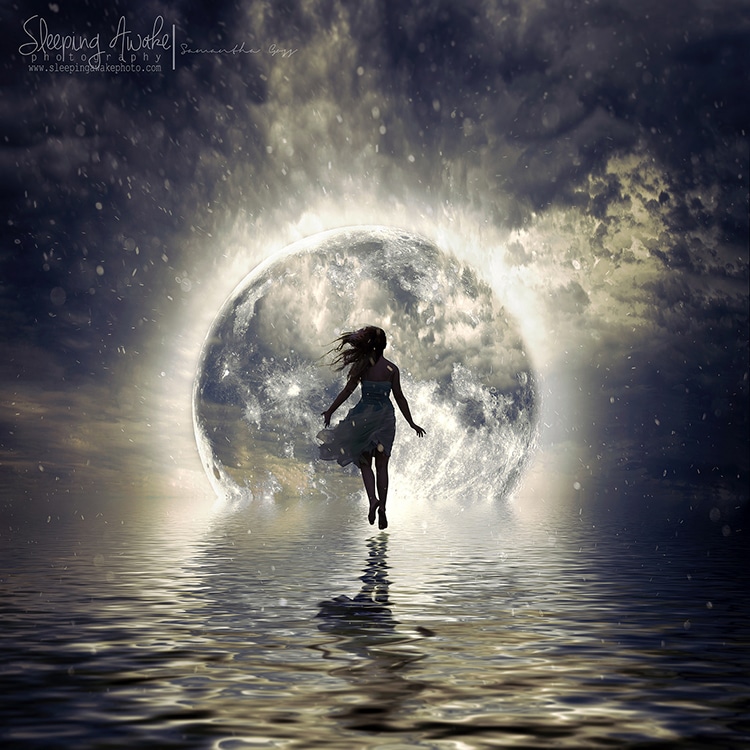

In your series, In Search of Sleep you chronicle your battle with chronic fatigue, dreams, and sleep paralysis, what made you want to create this series and has it helped ease the burden?
I started the series because I wanted to show myself that I wasn't afraid anymore, that I wasn't scared to talk about it openly, because there may be someone else out there who deals with the same issues as I do. I didn't tell anyone about my sleep paralysis until I was 17 years old. While I had these dream episodes frequently, they started to happen every night until it almost drove me into insanity. One day, I brought it up in conversation with my mother and it was then she set up my first appointment with a neurologist. I was soon brought in for extensive testing.
At the end of it all, my results were a bit more than I expected. I already knew I had insomnia and sleep paralysis, but he also told me about my night terrors and non-convulsive seizures. My In Search of Sleep series is only a light version of it all. I'm in the middle of working on something darker, images that display more of the actual reality of the things I faced during these episodes.
To you, what are the qualities that make a perfect shot?
I don't believe the shot always has to have a perfect composition or even make sense. I think the perfect shot is if you imagine it and then you can bring it to life. When you keep true to yourself and create something that means something to you, it's the perfect shot. Art is about expression, not staying inside a box just like everyone else.
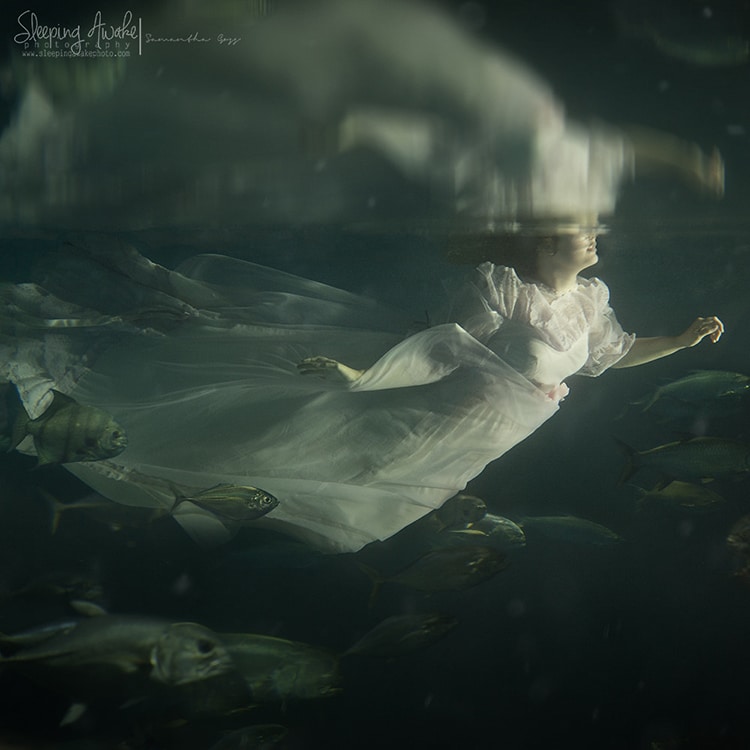

How has picking up photography impacted your life?
It hasn't just impacted my life, it has changed it completely. I went from someone who could hardly talk to people to someone who teaches photography and Photoshop workshops. I went from someone who had no way to express herself to someone who can express herself very easily now. I've been able to travel because of my photography. I even accomplished some lifelong dreams of mine to have a solo show in a gallery. Photography has made me a happier person for sure and sometimes I forget that and get lost in the darkness amongst my thoughts, but I always come back.
You once stated your work is based on life experiences and dreams, how do you go about turning everyday experiences into art?
Sometimes I create images that are replications of dreams I've had. Other times they are pretty similar but I have to compromise based on locations, outfits, props, etc. I'm not someone who is afraid to compromise. As long as the image has the same feel, same story, and same impact then I'm happy. I take the dream or experience and see how I can transform it into something that can visually be understood. I do this with locations, props, or color. Sometimes the concept is very simple and I don't have to go out of my way to find a location or a prop, I can just use the emotions that colors can bring out in images.

From conceptualizing to post processes, how much planning goes into a shoot?
It truly depends on each specific image and its needs. Some images need a lot of planning based on weather, people's schedules, hiking to a location, or even how elaborate it is. Usually I sketch my work down, write a few things about it, and make sure everything is good to go. I try my best to not take up too much time, especially if a model is involved, so I try to keep my photoshoots to 5-15 minutes. If the model is a personal friend, I can take longer.
How do you light your photos? Do you use artificial or natural light?
I typically use natural lighting. It's convenient and I don't have to carry around extra stuff because most of my locations take a bit of a hike to get to. When it's just a model and myself or even just when I'm alone, I don't want to haul a bunch of equipment around. I just don't like making a scene, if that makes sense. I do know how to use artificial lighting, but it’s not my preference.


What has been your favorite shooting location?
The beach. I can find endless possibilities with the ocean and sand. A good chunk of my work was created at the shoreline. I had a solo show in April of 2016 called “Dream Tides” that focused on the beach.
How would you define your style?
I like to think of my work as being very honest to myself. Each has a story that other people can get lost in, too. It's whimsical, surreal, and almost romanticized versions of my dreams, adventures, and life experiences. I aim to tell the truth with my work no matter what and I love creating images that bring you in for the beauty of them but they're much deeper than that.
Is there an overall message you would like your photos convey?
Never be scared to express yourself. No matter how crazy you think you will come across, always create. Create because you need it. Create because others need it. Create because art needs it.
What challenges have you faced while creating?
Oh man, so many things. I've had the cops called on me, fire department called, I've had people come out and yell at me, interrupt me, stand and laugh, etc. The list is endless. I think the biggest issue I faced was allowing myself to just not care about what others think as I'm doing the photos, or what people say online. My work makes sense to me and I don't care if it makes sense to other people.
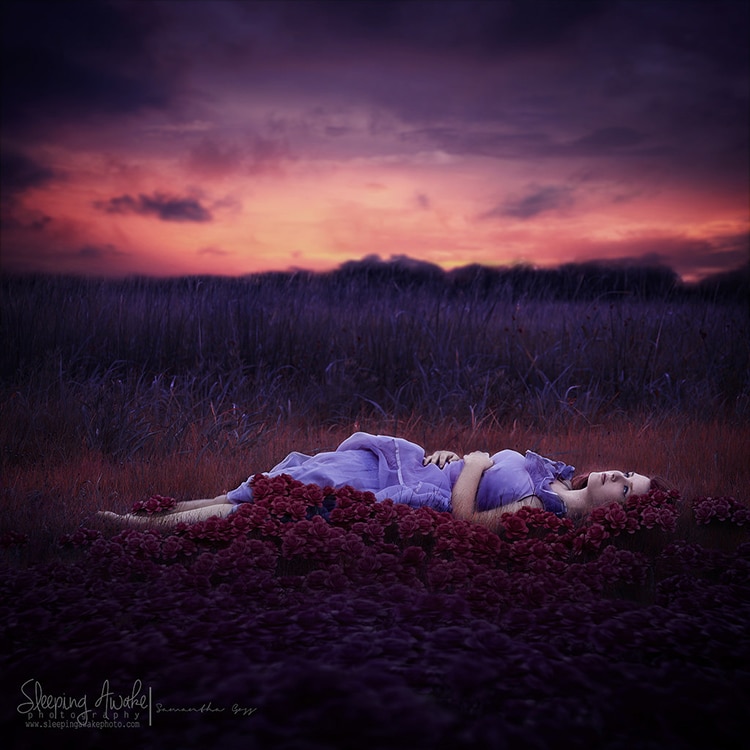

What's a must have in your gear bag? How important is gear to you?
Definitely the camera is the most important thing. Depending on the image and the location, I'll bring 1-2 lenses with me. On average I use my Sigma 50mm f/1.4 Art lens or the kit lens that came with my camera, Canon EF 28-135mm f/3.5-5.6 lens.
I'm personally not huge on the importance of gear. As long as you get the shot you want, who cares how awesome or expensive your gear is. I focus on what I'm creating over all else.
How much post processing goes into a completed photo?
This also depends on the needs of each individual image. Some are more surreal than others so they need more editing. The thing I spend the most time on is getting my colors how I want them.


What are your plans for the future? Do you have any upcoming projects?
I want to continue to do gallery shows and teach workshops. As for upcoming projects, I have a few I'm working on. I'm working on an entire new series that shows more explicitly what my sleep paralysis does. The other major project is I've put together a group showing of amazing artists to exhibit at Gallery 29, in CityArts Factory, in Orlando, Florida. A small dream of mine was to show with other people's work I loved and to also give new and upcoming photographers a chance to be seen. I find all too often that there is way too much competition between people. To me, art is about self-expression and you can't express yourself if you're worried about what the other person next to you is doing. Instead, I wanted everyone to come together and celebrate each other's work, accomplishments, and to help set future goals for these artist.
Do you have any advice for aspiring photographers?
In the famous words of Dan Wieden, “JUST DO IT.” Don't worry about what others think or say because there will always be people who have negative things to say. When you find yourself feeling doubtful about your own vision, release the people who are feeding your doubt. Something I've seen so much of is people who had amazing talent quit what they loved because other people beat them down. If someone does not have the passion to pursue something, they will weed themselves out. There is no need for jealously and hate in the art world. We're all weird, that's why we do art.

Samantha Goss: Website | Facebook | Instagram
My Modern Met granted permission to use images by Samantha Goss.
Are you a photographer who would like to be interviewed for our Behind the Lens series? Submit through our contact page for consideration!
Related Articles:
Traveling Photographer Captures the Quiet Beauty of Young Monks Reading
Interview: Photographer Captures Candid Color Images to Authentically Define City Life
Interview: B&W Film Photography Captures Raw, Candid Moments in Tokyo
Photographer Reveals How She Captured Surreal “Butterflies in My Stomach” Self-Portrait

















































































